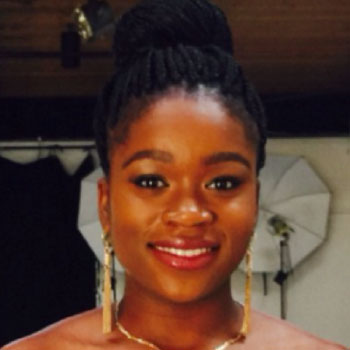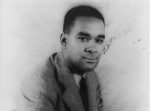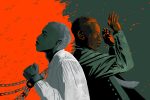Throughout the years, literature has revealed the trials and tribulations that plague black communities, and Angie Thomas’ “The Hate U Give” is one of those novels that digs deep into the meaning of the pop theme of thug life. “The Hate U Give” explores the injustice and white guilt that envelope the life of the protagonist, Starr, a young black girl.
Starr is a seventeen-year-old black girl who lives in a largely black and relatively poor community that is riddled with gang activity; however, she attends a predominantly white institution (PWI). While she was temporarily able to escape her gang-riddled neighborhood by attending a PWI, it was at the cost of losing touch with her childhood friend Khalil. Fortunately they were able to reconnect at a party in their neighborhood. However, their reunion came to an abrupt stop as they were were stopped by the police coming back from the party and Khalil is murdered by the white police officer, Officer 115.
Starr is the only one to witness the murder, which results in her struggle to reveal her identity over the fear of what the police will do to her family if she tries to speak out. As Starr struggles with the loss of her friend and constant threats from the local gang against her family if she attempts to expose why Khalil was forced into the drug business, she slowly grew into understanding what it means to have a “thug life,” the terms Khalil taught her before he was murdered. Thug life was coined by rapper Tupac Shakur as an acronym for “The Hate U Give Little Infants F—- Everyone,” which gears toward the prejudice against those of darker skin and the overall social problem of discrimination.
[su_youtube url=”https://www.youtube.com/watch?v=H6ufAb82GJ0″]
Among the micro-aggressions that Starr had to endure is feeling of white guilt, which is illustrated through both Hailey, Starr’s closet white friend and Chris, Starr’s white boyfriend. Even though both of these characters carry the theme of white guilt, each of them portrays the concept in a very different way.
Hailey embodies the more traditional idea of white guilt as she continually imposes micro-aggressions upon Starr, not necessarily for the fact that she is necessarily racist but rather because she is threatened by minorities around her, especially Starr, an African American. Chris, on the other hand, represents the more friendly attitude toward the black community, even attempting to apologize on behalf of generations of white people, “I’m sorry… I feel like I should apologize on behalf of all white people everywhere.” Chris is the character who is always trying to understand more about Starr, her tradition, culture, situation, struggles and, overall, “blackness, ” while Hailey’s firm beliefs in the American values prevents her from coming with the fact that Officer 115 shot and killed Khalil out of prejudice.
Hailey wants Starr to act in the same way as the docile Uncle Tom in “Uncle Tom’s Cabin,” which explains why Hailey is so struck by Starr’s posts of black culture on her Tumblr and her anger over the death of Khalil. When Hailey said, “You wanna really know why I unfollowed you, Starr? Because I don’t know who the hell you are anymore,” the distance between the two friends in terms of fundamental beliefs and values start to appear. Starr reveals a new side of her personality as an outspoken advocate of the black culture, which is something that Hailey did not, and simply could not, handle because she had become accustomed to controlling Starr. Hailey insisted that Starr become the white ideal of a black person, someone of a black by skin color but not a black culture, a very much racialized idea of individuality.
The black community consider such a person an oreo, c—, traitor or sellout. For Starr, to please both sides of her identity, she was forced to switch between acting “white” and acting “black.” As the same vernacular that she used in her hometown of Garden Heights would not be accepted in Williamson Prep, and Williamson Prep speech would not be accepted in Garden Heights, so code-switch is her only way out.
Code-switching is something that most black children and young adults go through because they live within two different settings, each of which has its own expectations and codes of behaviors. Using certain speech patterns from the black community within a white one would be considered loud, obnoxious, aggressive, unintelligent and, my favorite, “ghetto,” and vice versa. Many black people had to learn from a young age that sometimes they had to act in a way that is comfortable and acceptable to the majority around them at their own discomfort. It’s difficult to say but this is how many black people get by in life. Code-switching is not as much a choice. As illustrated in “The Hate U Give,” it is a means of survival in America’s racialized society today.
The novel shifts our focus away from the acts of racism toward the reasons behind those acts. It comments on how prejudice is ingrained in the American society, questions the internal struggles of both the perpetrators and the victims in racial conflicts and explores the projection of racial beliefs from a person to one of another race. Without even knowing, Thomas helps to express offenders internal issues as she looks into the subculture of racism and the lack of conversation about race. The story invites readers to understand that racism stems from an individual’s rationale rather than their actions.

















